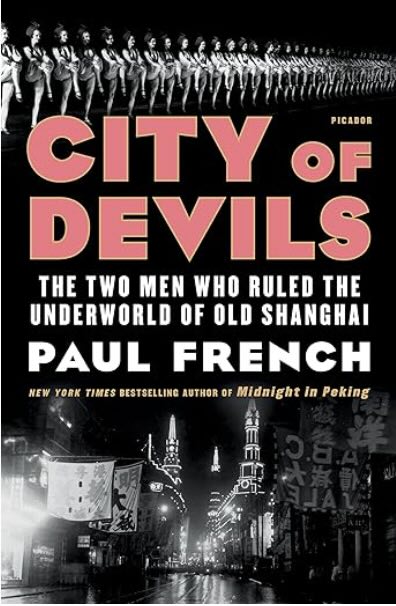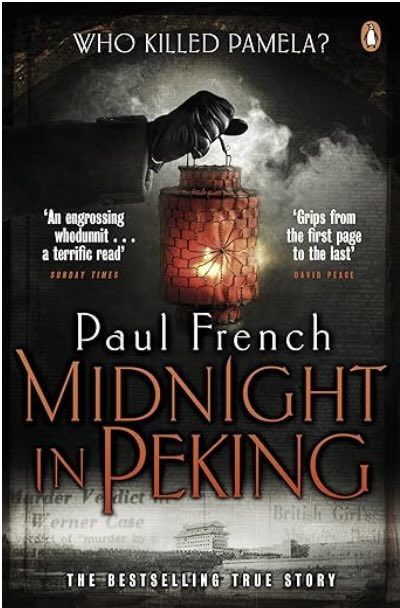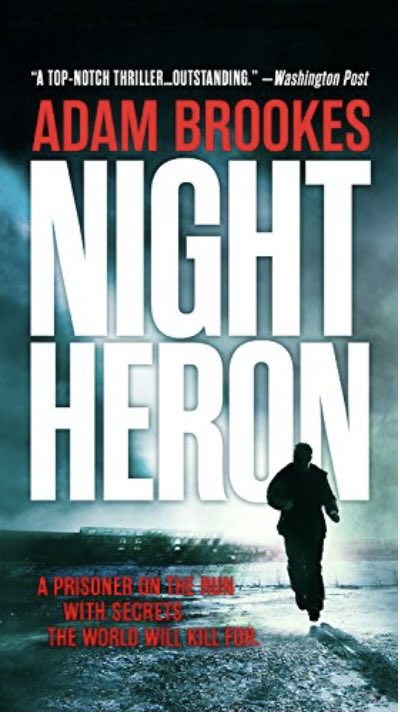My series on crime- and spy-fiction (ranging from The big sleep, Bosch, and Leaphorn and Chee to Weimar Berlin—Stasi—Russia—Hungary) introduces the novels of Qiu Xiaolong, set in Shanghai. Now I’ve been spellbound by two true crime novels by Paul French, his purple prose immensely readable, interweaving a crash course on modern Chinese history.

- City of devils: a Shanghai noir (2018).
Based on extensive archival research, it’s
the story of “Lucky” Jack Riley, the Slot King of Shanghai, and “Dapper” Joe Farren, owner of the greatest clubs and casinos. It tells of their escape from American prisons and Vienna’s ghetto, their rise to power, and the trail of destruction they left in their wake.
The backdrop is looming war, the spectre of the invading Japanese, bombings and massacres, gangster king Du Yuesheng, and the dreaded Kempeitai with their torture chambers at 76 Jessfield Road. As French explains,
I’m drawn to the flotsam and jetsam, the impoverished emigrés and stranded refugees, transient ne’er-do-wells and washed-up chancers, con men and female grifters. I seek out those foreigners who came to the China Coast and preferred to exist in the city’s criminal milieu, to disappear into its laneways and backstreets. They’re not distinguished or heroic. Invariably they’re liars and cheats. They’re rarely anything close to good, and all are terribly flawed, often living in Shanghai because they were one step ahead of the law and, invraibly, other options were few and far between. But many of them had a certain style, panache; their own particular flair. […]
Shanghai between the two world wars was a home to those with nowhere else to go and no-one to take them in. Its International Settlement, French Concession, and Badlands district admitted the paperless, the refugee, the fleeing; those who sought adventure far from the Great Depression and poverty; the desperate who sought sanctuary from fascism and communism; those who sought to build criminal empires; and those who wished to forget.
The subaltern underbelly of society (cf. the films of Xu Tong, or Jamyang Norbu’s factual stories of old Lhasa) is a major theme both of noir and popular music studies (blues, flamenco, fado, rebetika, tango). City of devils makes a salient counterpoint to the romantic nostalgia for the Shanghai jazz age, Zhou Xuan, and the early film industry (see e.g. Andrew Jones, Yellow Music, and this site, as well as here). There are musical cameos from “Slick” Jack Carter and his Serenaders, Valaida Snow (singing Someone to watch over me in 1926), Lilly Flohr, and notably Buck Clayton and the Harlem Gentlemen. French’s vivid accounts never reduce this world of sex and drugs, gambling and dancing—and violence—to mere glamour; the motley expat community was an enclave surrounded by poverty, starvation, and genocide (“the neon-lit city feeds off its host of four hundred million peasants barely surviving in China’s fetid hinterlands and laughs at their degradation”).
The men and women who’d come to Shanghai—from Mexico City, the Marseille Panier, London’s East End, the slums of Lisbon, the American Midwest, New York’s Lower East Side, across the Russian steppes from Bolshevism, the Jewish ghetto of Vienna and all points in between—create a gangsters’ paradise, sanctioned by the Japanese Imperial Army…
French ends with a sobering afterword tracing the fates of the characters—chancers, collaborators, war criminals; figures such as Sasha Vertinsky (back in the USSR) and dancer-turned-poet Larissa Andersen (most long-lived, in France).

Paul French’s earlier book,
- Midnight in Peking: the murder that haunted the last days of old China (2012)
is just as vividly recounted, but more subdued. Set around the Legation Quarter and the Badlands against the backdrop of the Japanese invasion of north China and rumours of “fox spirits”, French reopens the gruesome, unsolved case of the murder of Pamela Werner, teenage daughter of an eccentric British consul, on the basis of the father’s relentless search for the culprits amidst official stonewalling. Among the cast are Edgar Snow and his wife Helen. Again French updates us on the later stories of the characters.
Both books are gripping—tales of two cities with their utterly different landscapes: that of Shanghai naturally full of glamour and sleaze amidst all the degradation, while that of Peking, an unresolved mystery, is both more sombre and more personal:
From the start, I thought it important that Pamela Werner not be forgotten, and that some sort of justice, however belated, be awarded her.
Seemingly utterly removed from all this were the regional microcosms of the qin zither; the silk-and-bamboo clubs and Daoist rituals of Shanghai (see e.g. Beyond silk-and-bamboo), as well as the “classical” Western culture of Fu Ts’ong and his father Fu Lei (Richard Kraus, Pianos and politics in China); and the drum-singing clubs and temple fairs of Beijing. Yet these too were irrevocably scarred by warfare and politics.
Now I really must read French’s Destination Shanghai and Destination Peking.
* * *

Moving on to contemporary China,
- Adam Brookes, Night heron (2014)
(also well reviewed by Paul French) is an enthralling novel on espionage, its confused protagonist “a prisoner on the run with secrets the world will kill for”.
A BBC veteran, Brookes opens with an escape from a Qinghai labour camp (cf. links under Gansu). The suitably labyrinthine plot is full of convincing detail on a rapidly changing China. With an aside on British journalist Philip Mangan’s attempt to investigate the suppression of a religious cult in Yunnan, the dénouement takes place in coastal Fujian province. Much of the action takes place in an austere, enigmatic Beijing, with one tense scene at the Zhihua temple—which is quite enough to recommend any book to me.
